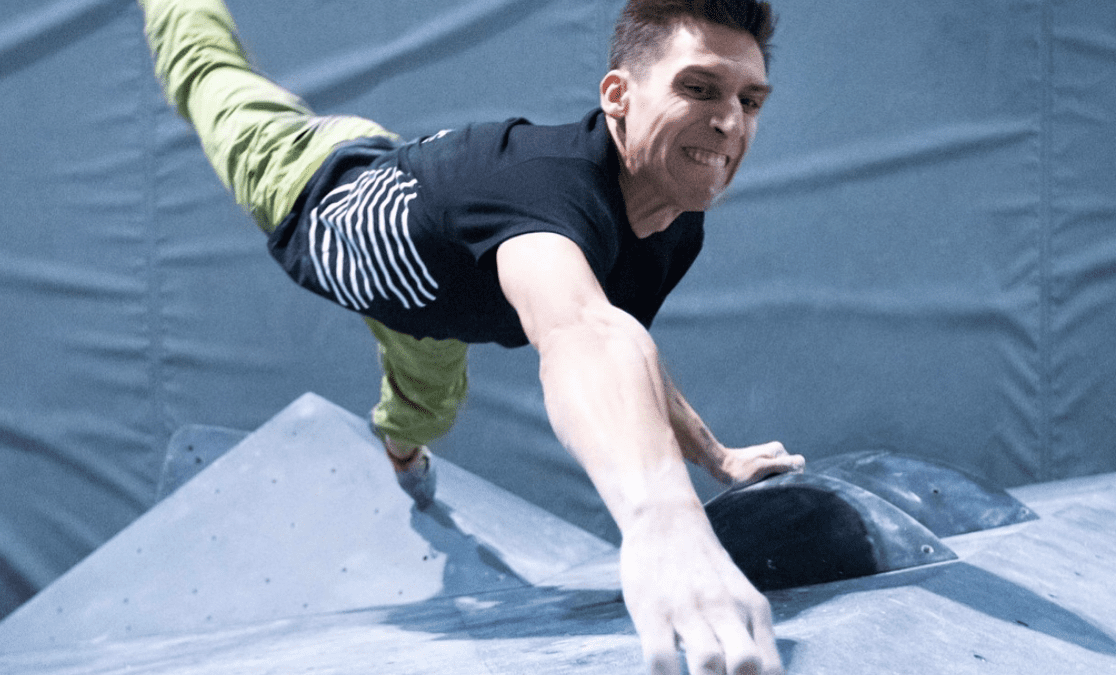Stay-At-Home Climbing Training Routine: Day Five
The fifth of a 14-day climbing-training plan for athletes looking to progress during self-isolation

As the coronavirus grips the nation, many people are focusing on isolating themselves at home for a few weeks. Most climbing and fitness gyms have closed and crag climbing isn’t recommended (due to overcrowding).
In light of the current situation, we’ll be posting daily training routines. If you’re going to be home, you might as well keep training. Thanks to everyone who is out and continuing to work in public during the outbreak, including essential services and folks at the grocery stores.
Day 5
Today we will be doubling up on what we did yesterday. The fatigue should be fairly high today, but as we are moving towards a hypertrophic state, we can trust that this is what is required for muscle building. Muscular hypertrophy occurs as a result of physical exercise and is defined as a term for the growth of muscle cells.
Through a high amount of training, we can fatigue the muscles to the point hypertrophy during rest as a result of extreme muscle fatigue in the preceding weeks. Ideally, we will be set-up for a perfect week of climbing progression beginning around March 31st. If we do not return to the gym by the end of March, this 14-day training plan will convert into a 21-day plan followed by a more aggressive deload week. For more information on the exercises, reflect back to Days One, Two, and Four.
https://www.instagram.com/p/B8Z–NphEyN/
Core
-
The 5-minute Core Destroyer:
- Very few people love doing core, which is why we developed the high intensity five-minute core exercise. The only requirement for this exercise is that you give maximum effort on each exercise. The workout is as follows:
- One minute each of the following exercises:
- plank
- big kicks
- swimmer kicks
- V-Sit
- big kicks
- One minute each of the following exercises:
- There is no rest between each exercise, instead rest at the conclusion of all five exercises. Then rest for five minutes and repeat the series.
- Very few people love doing core, which is why we developed the high intensity five-minute core exercise. The only requirement for this exercise is that you give maximum effort on each exercise. The workout is as follows:
-
Leg-lifts: Hanging or Floor
- Beginner: 30 leg lifts
- Moderate: 50 leg lifts
- Expert: 100 leg lifts
Antagonist Muscles
-
Elbows back:
- complete 5-20 push-ups with your elbows in line with your torso.
-
Wide Stance:
- complete 5-20 push-ups with your elbows perpendicular to your torso.
-
Diamond Stance:
- complete 5-20 diamond push-ups. Place your hands adjacent to one another in the middle of the floor. Lower your body until your sternum touches your hands, then push up. Elbows should press in-line with your torso.
-
Archer:
- Create a wide stance with your hands. Keep one arm straight while you depress your opposite arm. Push with the opposite arm, utilizing your straight arm for extra leverage as required. Complete 5-20 push-ups with a depressed left arm, and 5-20 with a depressed right arm.
Agonist Muscles
Pull Ups:
To get more out of your pull-ups, strive to pull quickly as you go up, and to release slowly as you go down. In climbing, power helps you go up, and strength helps you hold tension.
-
-
Beginner:
- complete 5-20 pull-ups
-
Intermediate:
- complete 20-50 pull-ups
- one arm lock-off: 3 sets at 10 seconds
-
Expert:
- complete 100 pull-ups
- complete a 90-degree lock-off for 10 seconds, three sets a side
-
Curls:
-
Hammer Curls:
- This exercise targets the Brachialis muscles. Complete three sets of 10 repetitions.
-
Curls:
- This exercise targets the bicep. Complete three sets of 10 repetitions.
-
Preacher Curls:
- This exercise targets the brachioradialis. Complete three sets of 10 repetitions.
Cardio
Run:
- Same distance as yesterday
Stretch
Hold each stretch for 15-30 seconds:
- Straddle Splits: This stretch is important to climbing as it increases a climber’s lateral flexibility for moves like stemming in a corner.
- Hamstring: keep your legs straight and bend down to your feet. Keep your back flat for an alternate version of this stretch.
- Hip-flexor: Flexible hip-flexors allow a climber to high-step.
- Quadricep: preventative against injury
- Triceps stretch: preventative against injury
- Shoulder stretch: increases mobility
- Calf stretch: increased heel-hooking mobility.
Featured Photo of Florent Balsez courtesy of Up the Bloc


